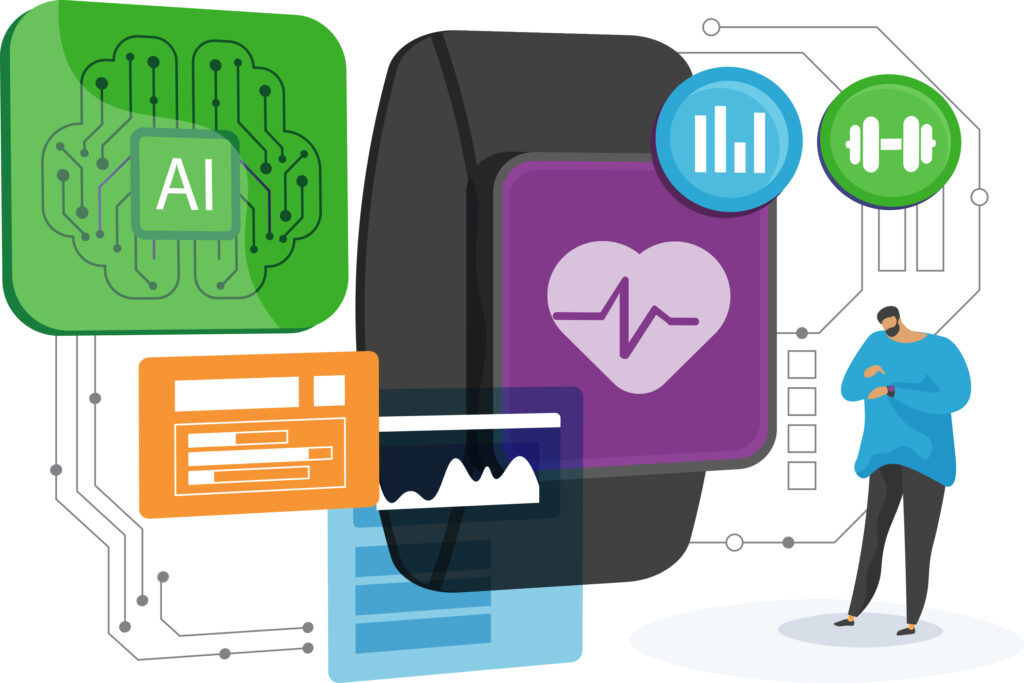Artificial intelligence (AI) has come a long way, from basement servers and academic labs to scalable, cloud-powered platforms. Once limited to researchers and deep pockets, AI became accessible to startups, small teams, and anyone with data and ambition.
Now, it’s going even further—to the edge.
Edge AI integrates intelligence directly into devices such as drones, sensors, wearables, and cameras, enabling real-time interpretation and action at the source. No lag. No handoff. Just smarter decisions, exactly where they’re needed.
Built for a World That Can’t Wait
Putting AI models directly on devices, sensors, and gateways gives organizations the ability to make faster decisions, improve security, and operate more intelligently in settings as varied as factory floors, hospital rooms, and remote field sites.
That momentum is building fast. Spending on edge computing is projected to reach $378 billion by 2028,1 reflecting the rising demand for real-time processing and localized intelligence2 across sectors including manufacturing, healthcare, energy, and public safety.
By processing data closer to its source, organizations can reduce latency, lower network costs, boost reliability, and strengthen resilience, even when bandwidth is limited or connectivity is unstable.
The Building Blocks of Edge AI Architecture
Bringing AI to the edge presents new design challenges. Edge environments introduce constraints such as limited processing power, minimized energy budgets, inconsistent connectivity, and harsh physical conditions.
To meet these requirements, technical leaders are adopting design strategies tailored for performance, efficiency, and reliability.3
- TinyML: Ultra-compact machine learning (ML) models built to run on microcontrollers and ultra-low power (ULP) devices. Ideal for energy-sensitive applications including agricultural sensors, wearable health monitors, and industrial machines that operate for years without replacement.
- Model compression: Techniques like pruning, quantization, and knowledge distillation shrink model size while preserving accuracy, making it possible to run deep learning models on devices with limited compute and memory, such as connected cameras or edge gateways.
- Federated learning: A distributed approach to training that keeps data local. Instead of transmitting sensitive information to the cloud, models are trained across decentralized endpoints—enhancing privacy, compliance, and personalization in industries such as healthcare, finance, and smart home technology.
- AI-optimized hardware: Accelerators tailored to diverse edge workloads including lightweight TPUs and NPUs for on-device inference (such as speech and image recognition), FPGAs for customizable industrial automation tasks, and ASICs for high-efficiency, fixed-function operations such as autonomous navigation or object detection.
These foundational choices shape the viability of edge AI, determining whether solutions can scale securely and operate effectively in disconnected, distributed, or demanding environments.
The Edge–Cloud Continuum
Edge and cloud environments operate in sync: the cloud provides the intelligence; the edge puts it into action.
Consider manufacturing. An organization uses the cloud to train AI models across production lines globally. On the factory floor, edge devices detect anomalies, predict failures, and adjust machinery in milliseconds—without introducing latency or security concerns by sending data to the cloud.
This continuum shows up across industries in three key ways:
- Model lifecycle management: Train models in the cloud, deploy them to edge devices, and continuously improve them with data collected on the ground. For example, a smart camera system can update its detection model based on real-world edge data, then sync improvements back to the cloud for retraining.
- Distributed intelligence: Devices make local decisions, such as a self-driving car braking to avoid a hazard, while feeding insights back to the cloud to optimize fleet-wide behavior or update navigation models.
- Resilience and autonomy: Maintain critical operations even when cloud connectivity is lost. On offshore rigs, in disaster recovery zones, or at remote agricultural sites, edge systems continue analyzing and acting, keeping critical systems running when downtime isn’t an option.
The result is an AI architecture that is agile, responsive, and durable. It learns globally, acts locally, and adapts dynamically, no matter where the data lives.
Stepping Back from the Edge
Edge AI is not just a shift in where intelligence happens. It’s a shift in how intelligence can be designed to meet the moment in our daily personal and business lives. From compressed models and ultra-low-power deployment to federated learning and AI-optimized hardware, the real opportunity isn’t just in bringing AI closer. It’s in building it right for the environments it will serve.
Success at the edge starts with intentional architecture, built for constraint, speed, and scale. Because when you get the building blocks right, edge AI doesn’t just run — it delivers.
- IDC, Worldwide Spending on Edge Computing Forecast to Reach $378 Billion in 2028, April 2024.
- CIO, Evaluating the Relative Cost of Edge Computing, August 2024.
- Medium, Nati Shalom, Edge-AI trends in 2024, January 2024.
